Located in the in southwestern Transylvania, the Citadel of Alba Iulia is one of Romania’s most recognizable places, a landmark whose history goes back 2000 years. Also known as Alba Carolina, the Citadel was one of most representative fortresses in Romania and also in Eastern Europe.
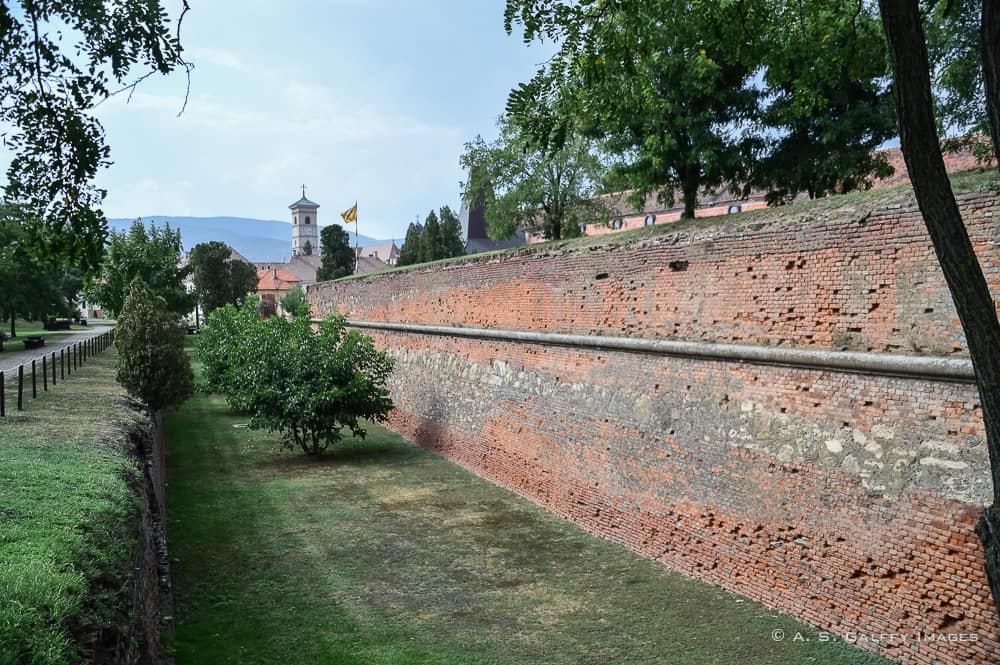
Table of Contents
From a Roman Fortification to a Habsburg Castle
Apulum, the initial fortress erected on his site, dates back to the 2nd century AD. The military fort was built to control the vast gold resources in the nearby Apuseni Mountains.
Apulum was the oldest and the largest castrum romanum ever built by the Romans on Romania’s territory. The Slavic name of the town was Bălgrad (The White Fortress), which was later Latinized into Alba Iulia.
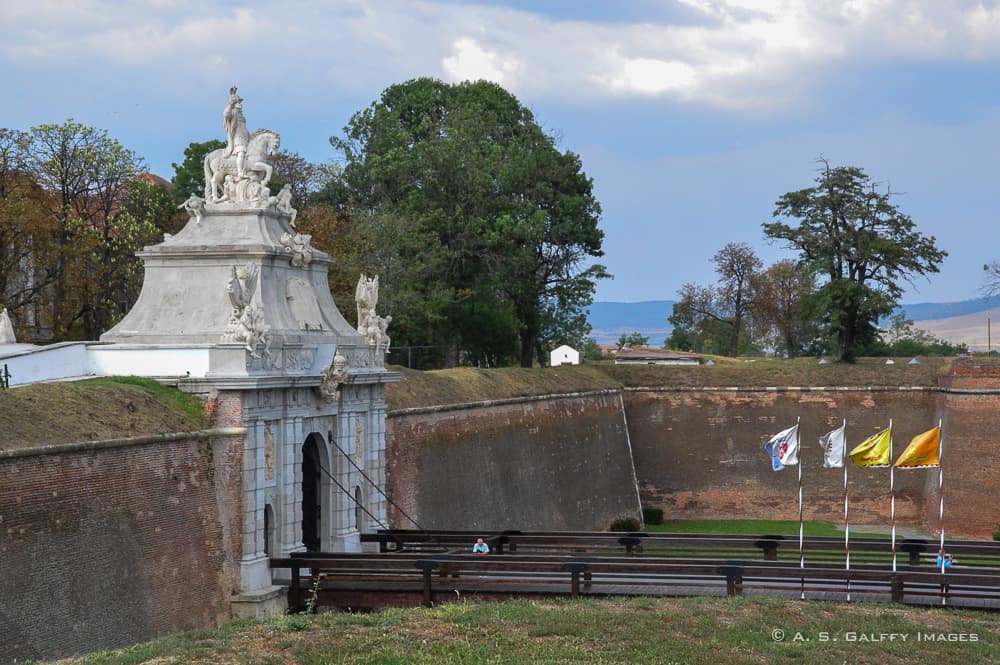
During the Middle Ages Alba Iulia became an Episcopal citadel serving as the capital of the independent Principality of Transylvania. At the same time the fortress also served as the residence of the Transylvanian princes.
The fortress that you see today was built in the 18th century by the order of the Habsburg emperor Charles VI. The citadel was a major military structure with nine huge bastions made into a star-shaped, Vauban-style fortress.The Austrians used blocks of stone from the old Roman defense walls in the construction.
Alba Iulia Citadel suffered only one attack, in 1849, when 8,000 Hungarian soldiers besieged it. However, the attack was not successful.
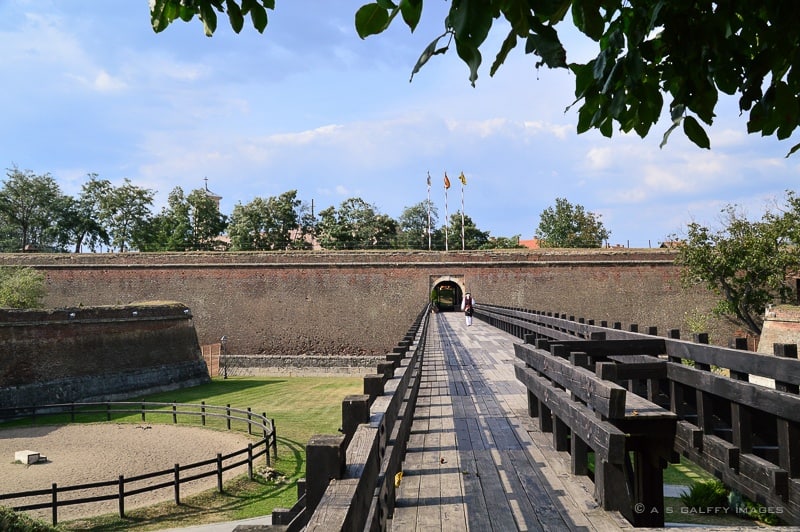
In the second half of the 19th century, when the modern city of Alba Iulia started developing, most of the walls of the bastion have been demolished to make room for the new constructions.
During the communist era, the fortress fell into complete neglect because of the lack of funds for repairs. Some of the local citizens even stole brick and stone from the old structure to use in their own constructions.
READ NEXT: 15 Fun Facts About Romania You Probably Didn’t Know
The Historical Significance of Alba Iulia Citadel
Alba Iulia was the main political, administrative, religious, and military center of Transylvania during all historical periods.
In 1599 Voivode Mihai Viteazul (Michael the Brave) proclaimed himself Prince of Walachia, Transylvania, and Moldavia at Alba Iulia – uniting for the first time the three provinces of Romania.
His bronze statue stands beside the Catholic Cathedral, in front of the palace that he used during his one-year reign.
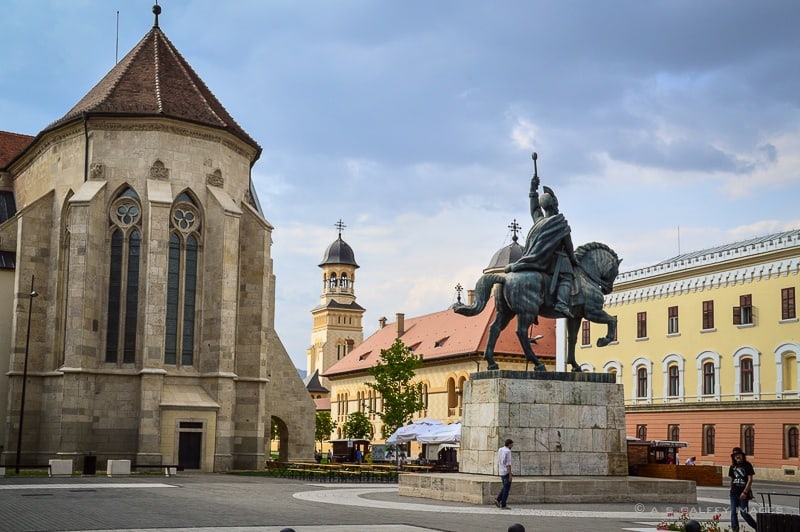
In December 1918, the majestic Citadel of Alba Iulia was the proclamation site of the unification of Transylvania’s with Romania. A few years later, in 1922, Ferdinand I of Hohenzollern was crowned King of Romania in the Citadel.

What to Visit Inside the Citadel of Alba Iulia
In recent years Alba Iulia citadel underwent major restorations, receiving new walls and gates, and beautiful modern statues. The grounds are sparkling clean, well kept and really pleasant visit. There are lots of interesting exhibits around, as well as many new cafés and restaurants.
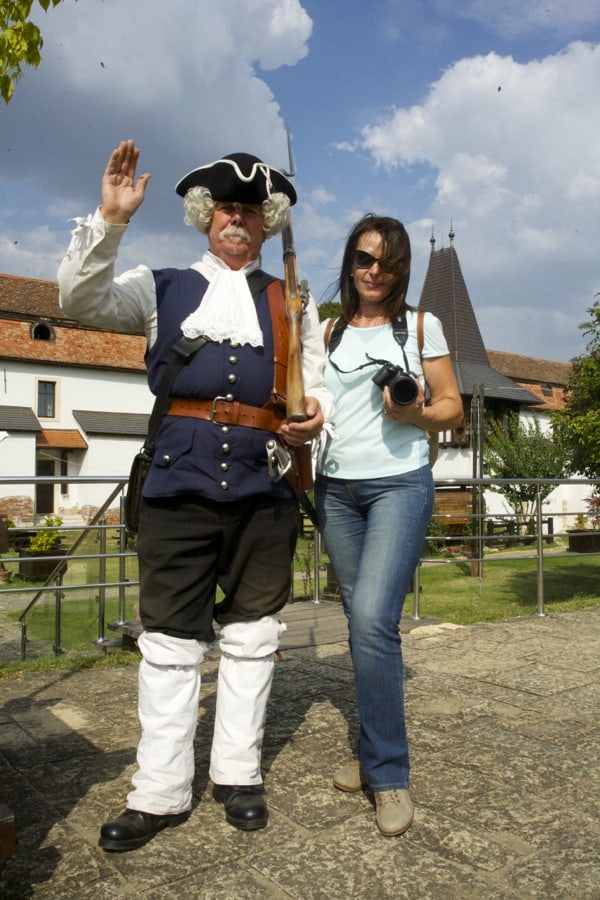
During the day there are some live shows, like battlefield scenes and the changing of the guard at noon. You can also rent a bike to tour the citadel.

The citadel is also home to some very nice stores from where you can buy authentic, Romanian souvenirs like embroidered shirts, masks, hand carved wooden spoons, etc.
St. Michael’s Roman Catholic Cathedral
Right in the middle of the citadel is the Catholic Cathedral, one of the most beautiful churches in Romania, dating back to the 11th century. The cathedral sits on the ruins of a Romanesque church. This is one of the best-preserved medieval cathedrals in Europe.
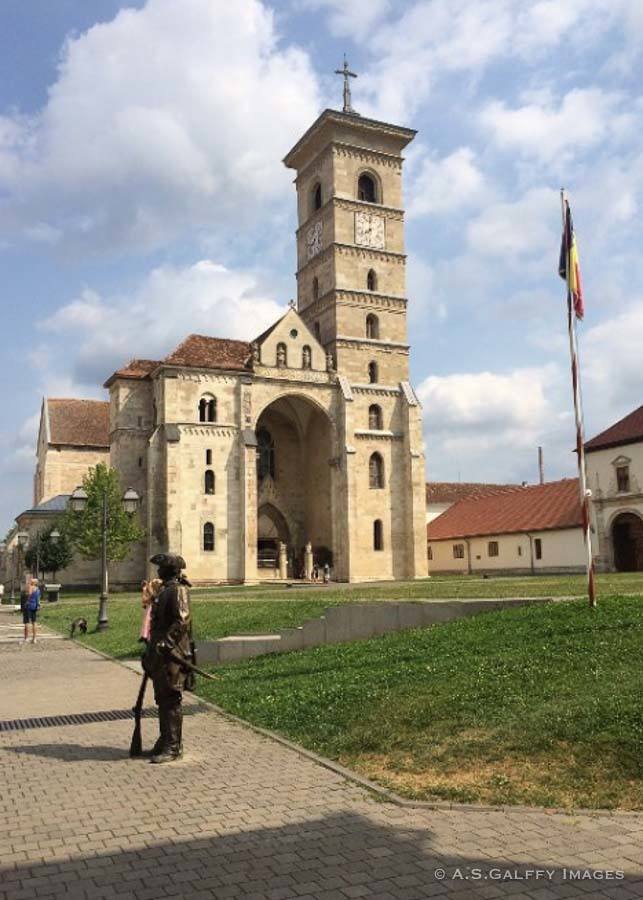
The Cathedral contains the tombs of Transylvanian prince Janos Hunyadi and other princes of the Rakoczy and Bethlen families.
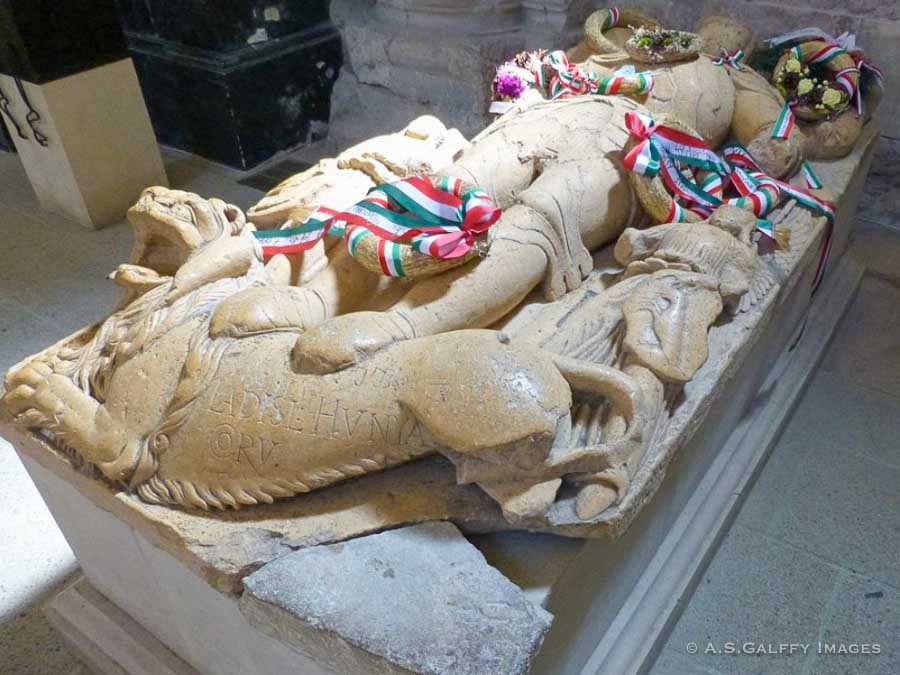
The Baroque Gates
When visiting the fortress today, you can still see three of the original six highly ornamented, early Baroque gates. On the east side is the First Gate that features a triple triumphal arch and a two-headed Austrian eagle.
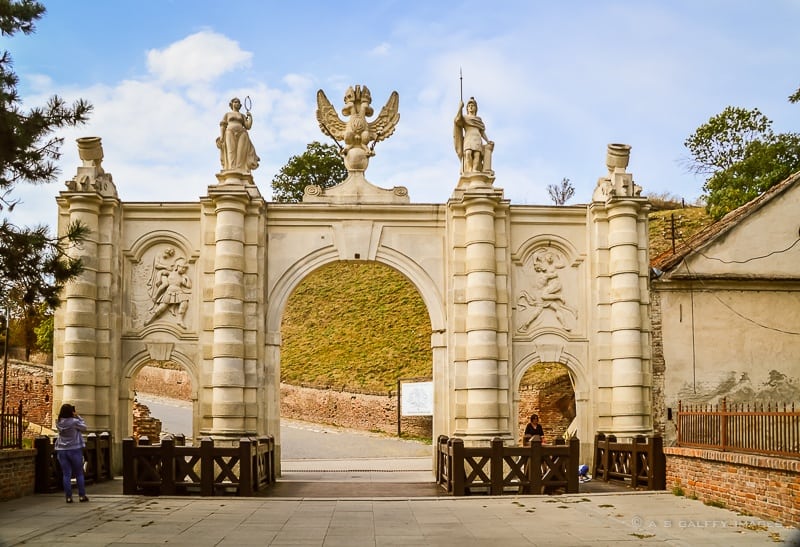
The Third Gate bears on the top a statue of Charles VI as well as the Austrian eagle.
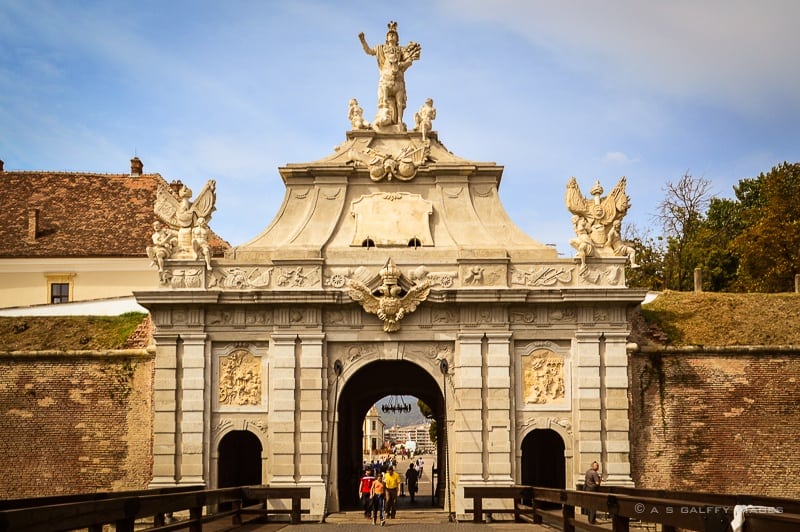
On the west side is the Fourth Gate, again with an Austrian eagle over its doorway, and carved with the banners of Charles VI.
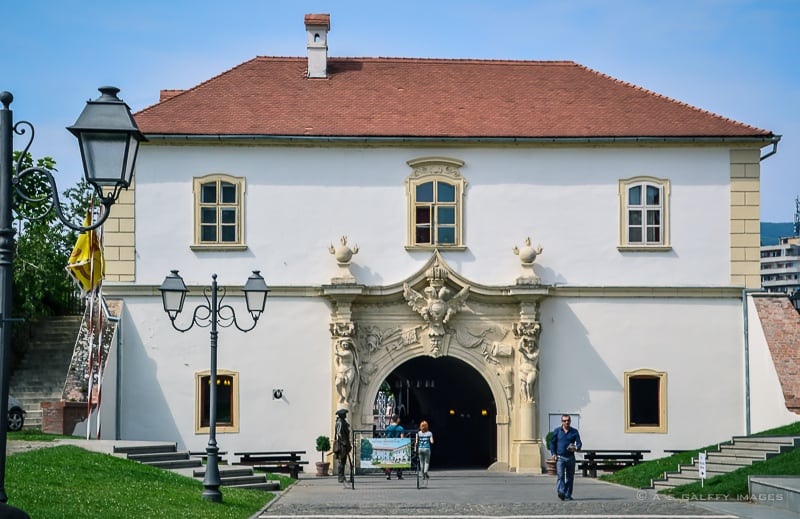
The Coronation Cathedral
Another attraction in the citadel is the Orthodox Cathedral of the Reunification, which celebrates Transylvania’s reunification with Romania.
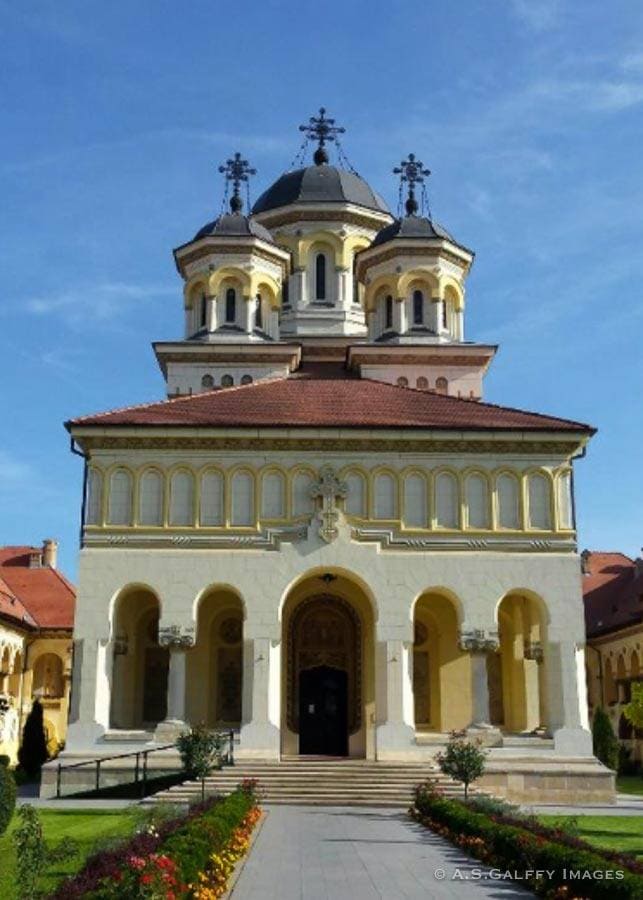
Although relatively new (from the 1920s) the imposing complex of buildings and gardens is stunningly beautiful. The cathedral has also a historic importance because because it was the coronation place of King Ferdinand I and Queen Maria, in 1922. Therefore, some people also call it The Coronation Cathedral.
Other Things to Do in the Citadel
Besides the two cathedrals, you can also visit the beautifully restored Royal Palace. The palace once served as the residence of Mihai Viteazul.
The Batthyaneum Library hosted in a former Baroque style church and famous for its collection of rare books, and the Babylon Building, home to the National Museum of Unification.
There are several excellent restaurants in the Citadel where you can enjoy a good bite, ranging from moderate to high end.
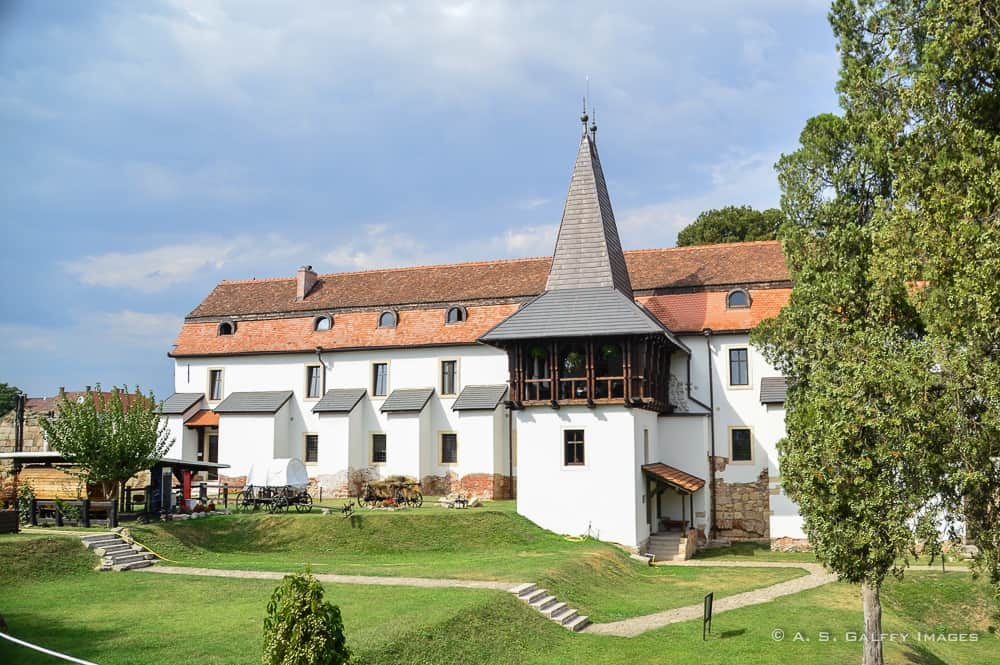
And if after visiting the fortress you want to spoil yourself, you can have a lavish lunch at Hotel Medieval within the citadel walls, one of the most upscale hotel/restaurants in Alba Iulia.
The prices are very high, even for the international standards (around $100 for a 3-course meal, with wine). However, the food, ambiance and service are absolutely outstanding.
There is no fee to enter the citadel or the cathedrals (Catholic and Orthodox).
YOU MAY ALSO LIKE:
PIN THIS FOR LATER:
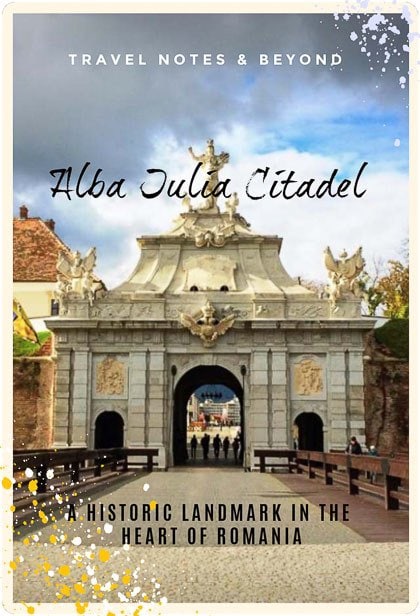

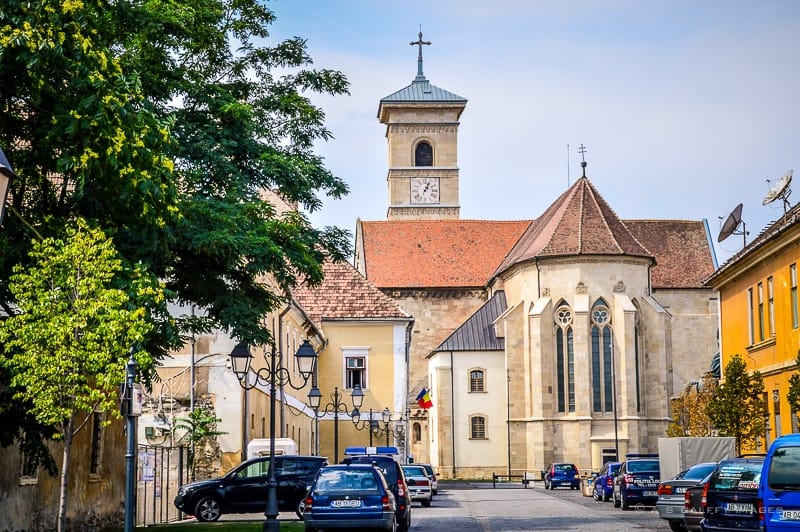
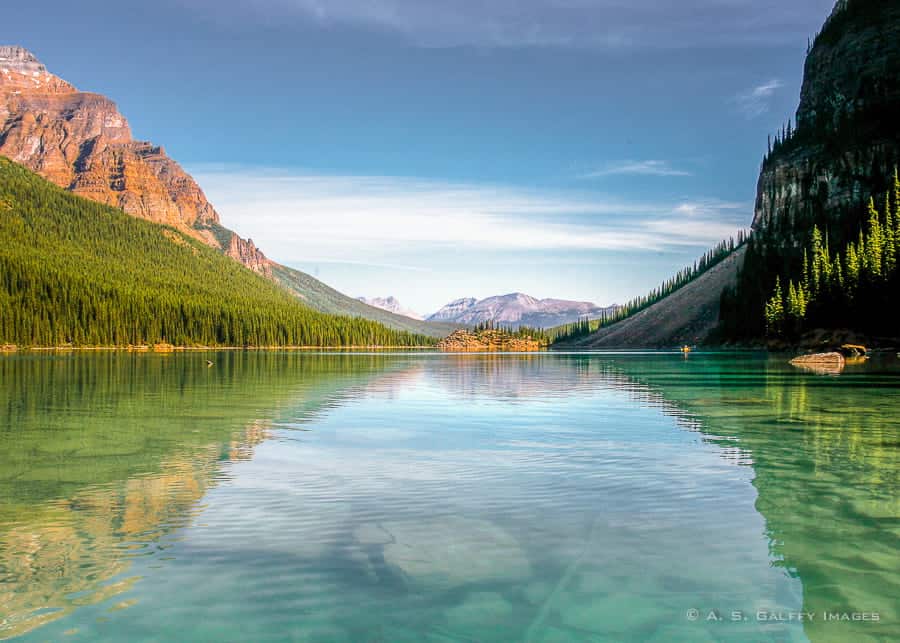 8 Fun and Inexpensive Things to Do in Banff in Summer
8 Fun and Inexpensive Things to Do in Banff in Summer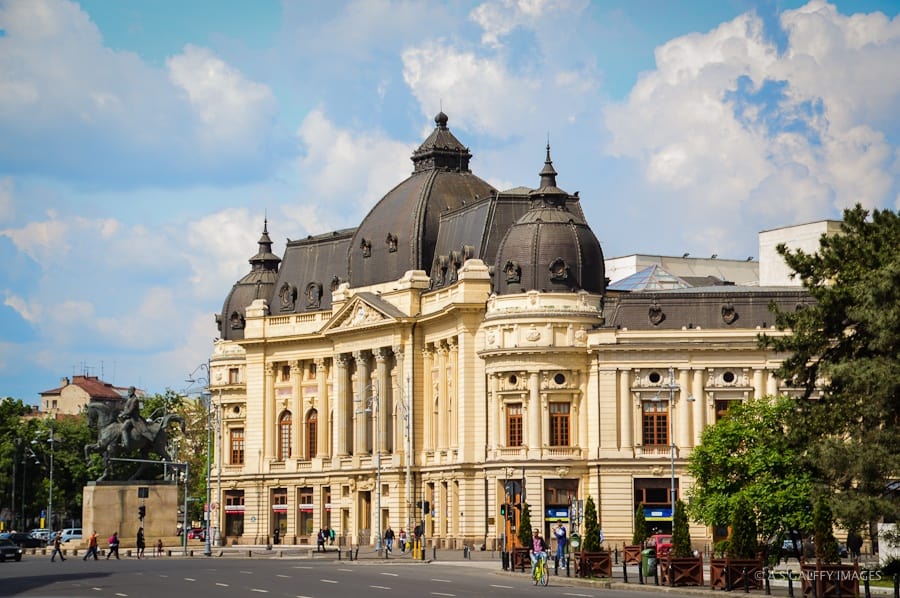
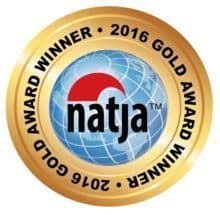
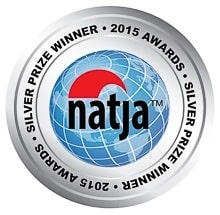

Elena
Alba Iulia looks like a very interesting place with long and illustrious history. Judging by your photos, Romanians put a lot of efforts into lovingly restoring it. I guess good weather helped, but nevertheless the citadel seems very cheerful and inviting.
Eloise
Wow! You have done a very nice job at reviewing this beautiful building! I have never been to Romania. I don’t even read a lot about it. What you share here makes me think it is worth more attention that it actually receives. Thanks for sharing!
Natalie
What a surpringly gorgeous place! I will be adding the citadel to the places I’d like to see. I really appreciate your photos. The one with the red brick wall next to the green grass was my favorite. On a side note, a few didn’t show up for me.
Carly
I love the looks of all those gates. 2AD makes that a really, really old place. Romania continues to appeal to me.
Joanna
I am originally from Romania and I have to say, not a lot of tourists choose Alba Iulia as part of their Transylvania exploring. You did a great job here talking about the city and its history, together with some really nice pictures. Slowly slowly, Romania will become a more popular destination for foreign tourists. I have been recently to Sibiu and I was impressed on how I could hear more German than Romanian talked on the streets from the centre of the city.
Anda Galffy
Great to hear from a fellow blogger from Romania, Joanna. I hope the tourism industry in Romania will pick up in the near future. This country is really beautiful.
Adelina // Pack Me To
I really wish I had explored more of Romania when I was in Budapest. Everything you’ve been posting has been so gorgeous and you’re right, completely unknown and underrated. Fantastic photos.
Anda Galffy
Thank you, Adelina. You can still go visit, but I agree it would have been easier from Budapest…
Vlad
I have visited Alba Iulia many years ago and I remember it was unexpectedly beautiful. I think I need to go back and see how it has changed since, your pictures are showing it in a very good light 🙂
Anda Galffy
The citadel was recently renovated so it’s really worth visiting now.
Rosemary K
Sounds like a great place to visit. I’m looking forward to visiting all the places in Romania you have described.
Anda Galffy
I’m glad if I managed to incite your interest about Romania. Hope you’ll like it.
Esther
This looks like a lovely visit, and what great weather too. I’ve been wanting to visit Poland. About time I did.
(Found you through Sunday Traveler)
Anda Galffy
Alba Iulia is in Romania not in Poland, Esther.